 Ambisonic, the innovative Canadian space prog duo returns with their third release, Manitou, to once again blow your mind. Ambisonic consists of Erik Culp on keyboards, pedals, and guitars and Paul Barry on drums and piano. The music on Manitou represents two musicians operating at the peak of their powers. Complex, riveting rhythms propel lush synthesizers and vintage Moog electronics around in tightly controlled sonic environments where not a single note is wasted. Drawing on not only progressive and space rock as influences, but also on jazz, electronica, and film soundtracks, the duo weave these influences together into seamless, tightly knit compositions. And although the music may have been very challenging for the players to perform, they imbue it with enough top notch songwriting, catchy little pop hooks and intriguing sounds to make it quite accessible to any listener. Although Ambisonic always had a kind of keyboard oriented vibe to it, this outing supposedly has less guitar on it. Maybe I’d have to go back and listen to ARP and their self-titled debut again, but it still sounds like business as usual to me. Not that they’re treading over previous ground. It’s clear that these two musicians really enjoy challenging each other and pushing their sound forward with each release. But there is still a definite and very distinctive quality to their music that makes it uniquely Ambisonic. My favourite tracks on the album are the opener Manitou, with its cool staccato keyboard vamp and High Ideals, with its sumptuously melodic electronics, manic electronica like drum-vibe (played on real drums though!) and psychedelic wah-wah guitars. Other standouts are the funky electro-rock of Buzwah and the spiralling beauty of Slow Wave. But every track on Manitou has something to offer and will surely please any fan of progressive rock, space rock, or electronic music.
Ambisonic, the innovative Canadian space prog duo returns with their third release, Manitou, to once again blow your mind. Ambisonic consists of Erik Culp on keyboards, pedals, and guitars and Paul Barry on drums and piano. The music on Manitou represents two musicians operating at the peak of their powers. Complex, riveting rhythms propel lush synthesizers and vintage Moog electronics around in tightly controlled sonic environments where not a single note is wasted. Drawing on not only progressive and space rock as influences, but also on jazz, electronica, and film soundtracks, the duo weave these influences together into seamless, tightly knit compositions. And although the music may have been very challenging for the players to perform, they imbue it with enough top notch songwriting, catchy little pop hooks and intriguing sounds to make it quite accessible to any listener. Although Ambisonic always had a kind of keyboard oriented vibe to it, this outing supposedly has less guitar on it. Maybe I’d have to go back and listen to ARP and their self-titled debut again, but it still sounds like business as usual to me. Not that they’re treading over previous ground. It’s clear that these two musicians really enjoy challenging each other and pushing their sound forward with each release. But there is still a definite and very distinctive quality to their music that makes it uniquely Ambisonic. My favourite tracks on the album are the opener Manitou, with its cool staccato keyboard vamp and High Ideals, with its sumptuously melodic electronics, manic electronica like drum-vibe (played on real drums though!) and psychedelic wah-wah guitars. Other standouts are the funky electro-rock of Buzwah and the spiralling beauty of Slow Wave. But every track on Manitou has something to offer and will surely please any fan of progressive rock, space rock, or electronic music.
I wanted to learn more about Ambisonic and Manitou, and was fortunate enough to be able to discuss those things with the Atomic Cosmonaut himself, Erik Culp, via e-mail. Here’s what I asked and what he had to say…
Aural Innovations: How did you and Paul first end up working together?
Erik Culp: I put an ad in Craigslist and held auditions. He was so into it that he wanted to jam that night.
AI: What was the idea or thought going into Ambisonic? What were you hoping to achieve?
EC: To start with, we wanted to do technical instrumental prog. To see how far two people could go, and how big two people could make it sound. To really challenge ourselves, while still making palatable music. The music progressively became more and more keyboard oriented, but that wasn’t a preconceived notion.
AI: You seem to have drawn on a wide range of influences for the Ambisonic sound. Are there any particular artists that stand out as being very influential on you?
EC: Paul and I have pretty different influences, so he would and does disagree with what I say are our influences. For me it would be Afro Beat like Fela Kuti, Miles Davis, Sergio Leone, 60’s Moog albums, Jeff Wayne’s War of the Worlds, Alain Goraguer’s La Planete Sauvage, Pink Floyd’s Animals (Paul strongly disagrees and thinks Dark Side of the Moon is superior, but I can’t get over the conservative playing, saxophones and back-up singers), Sigur Ros, the Flaming Lips, and Tortoise. I also have to throw Godspeed! You Black Emperor in. Major influence. My favorite show ever was at an apple orchard outside of Picton. Godspeed played in a barn. 9 people in the band, 9 in the audience. We camped with them and sat around the fire boozin’ all night.
AI: Those are definitely some pretty interesting influences. You mentioned that Afrobeat and Miles Davis had been especially influencing you a lot lately?
EC: For sure, I’m playing a lot of single note repetitive guitar lately.
AI: What drew you to this kind of music?
EC: My friend Jaqui gave me Bitches Brew for Christmas in high school, because she knew I was into the earlier stuff. It blew my mind. It really scared me at first. People thought Hendrix was weird/revolutionary. Holy crap! Then, I got into the players that he worked with. McLaughlin, Hancock, Corea. I first heard Kuti in a coffee shop about 12 years ago. I had a similar reaction. It was the song Lady and it freaked me out. It was so epic, groovy.
AI: What particular movie soundtracks stand out as being an influence on you?
EC: Hmmm… Logan’s Run, the Man with No Name Trilogy. Those are the biggies
AI: How have Kurt Vonnegut novels been an influence on Ambisonic?
EC: Ha ha! We both really like him. His version of reality is a bit off, and that’s comforting. I don’t really want too much to do with reality.
AI: What’s your favourite Vonnegut novel?
EC: That’s a tough one. I’m going to have to go with Breakfast of Champions. It has it all. I’m lucky enough to have worked on the movie too.
AI: How has the progression of ideas evolved from your previous projects such as Mind of a Squid and your solo work as The Atomic Cosmonaut? Do you see Ambisonic as a totally new sound, or were there any elements of those previous projects that were brought into what you were doing with Ambisonic?
EC: Everything is still me. A fairly natural evolution. Funnily enough, I’m back to doing mainly guitar, jam based stuff now. I remember, after Paul got the gig, we were jamming out ideas and he said “I really don’t like long, slow stuff.” That was a major challenge. My response was “That’s all I do!!!” That was very hard for me to accept, but Paul has been very good at challenging me. We will be jamming on a part that takes everything in me to keep going, and he stops and says something like, “How about we do a dead stop on the three, add another beat in the fourth bar and change keys for the second verse?” I usually figure out a way to do it…I will usually request to work on it, and get back to him next rehearsal. All four limbs are working all the time!
AI: So I guess there’s little chance of Ambisonic doing a 20-minute epic track on your next album then?
EC: Haha! You never know. ARP Parts 1-4 ended up being pretty long. We actually wrote/recorded that song in a day, by the way.
AI: How do you go about creating an Ambisonic album? Is there a lot of improvisation involved, or are the pieces fully composed before recording?
EC: ARP was half created through jams during the recording session, and half written previously. Manitou was all previously written and the drums were recorded last, like the Atomic Cosmonaut recordings, the first Ambisonic record, and the first Mind of a Squid record. Previously written can still mean that a lot of the ideas came from jams… we document all of our jams, and the recordings have been invaluable to us for song creation. Many of the songs came out of my solitude at my cabin in Haliburton in the dead of winter, as well.
AI: I’m assuming that’s the cabin where you recorded ARP? What was it like creating an album in that kind of isolation?
EC: Actually, we recorded ARP outside of Huntsville, and Manitou was recorded at my cabin outside of Haliburton. I love creating in isolation. The winter is best. No clutter or noise. It seems that the heavy, draining focus that the music requires needs to be set in an environment of peace, rather than the clutter of the urban experience. Perfect decompression.
AI: Is all the music recorded live, or are there overdubs?
EC: Tons of overdubs. I’m a freak that way. I will record 30 tracks and blend them together to create a near imperceptible beep at the end of a chorus or something. Some of the tunes are pushing 200 tracks!
AI: You said in one of your promotions that Ambisonic sounds like a dozen musicians when in fact there are only two of you. How do you achieve this sound, especially when playing live?
EC: I play bass with my feet on a Moog Taurus, keyboards and guitars. And 4 track looping with an Electrix Repeater.
AI: You described your new album Manitou to me as a ‘huge left turn’ from your previous albums. How do you see it as a huge left turn?
EC: Less guitar than I have ever put on a record. Short, concise songs; more pop-ish hooks.
AI: Was this a conscious effort or just a natural evolution in the same way that Ambisonic became more keyboard oriented when it started?
EC: Both, I guess. For a while I was getting bored with the tonal variation that a guitar could give me. A Moog’s tonal range is virtually infinite. I’m back on the side of guitar now. We just had a brief falling out!
AI: What are the future plans for Ambisonic?
EC: Interesting question. I don’t really know the answer.
AI: You mentioned a new improvisational project you were currently involved in. Can you tell me more about that?
EC: We are called the Ozark Howlers. It’s fun… I just play guitar. Next to no pedals. I wanted a chance to focus on the music, rather than the gear. Scott from Mind of a Squid is on bass, and Joeseph Doane (another former MoaS bassist) is on guitar. Francis is on drums. It’s slow, long and mellow.
AI: Sounds really awesome! Are there plans to record an album or is this just going to be a live project?
EC: We have a whack of recorded material now. We may release highlights. We probably aren’t going to do too much live performance. Who knows?
AI: Thanks Erik! We’ll be looking forward to hearing more music from any projects you’re involved in.
For more info, visit: http://www.ambisonic.ca, http://ambisonic.bandcamp.com, and on Facebook at http://www.facebook.com/pages/Ambisonic/52347835425
Reviewe and interview by Jeff Fitzgerald
Band photo by Karol Orzechowski
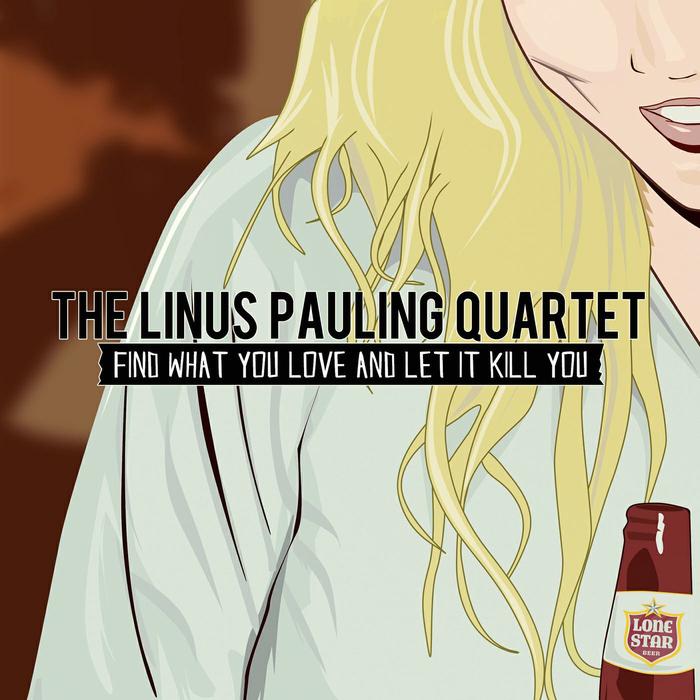 The latest from Houston, Texas’ psychedelic, stoner, metal, ass kickin’ rockers LP4 is a three song 7″ vinyl EP they call Find What You Love And Let It Kill You, which apparently came from advice given to the band by Kinky Friedman. Side 1 consists of The Road, a mellow but rocking psych song with a nice melody and a dreamy flowing vibe. The bell-like keyboard melody gives it a “gentler” feel than what’s usually heard from the LP4. Good song. Side 2 includes two songs, starting with USA, which dispenses with the mellow stuff and punks out for a brief 1.5 minutes. The band shift gears again for La Jetée, an even mellower and again melodic song that’s almost folk-psychy, and has pleasant dual vocals by Ramon Medina and guest Mlee Marie. Three songs, short and sweet. The record will be released on July 8th, so mark your calendar to get a chunk of LP4 wax. Note that if you’re in the Houston area there will be a record release show on July 20th at 7pm at the Vinal Edge record store.
The latest from Houston, Texas’ psychedelic, stoner, metal, ass kickin’ rockers LP4 is a three song 7″ vinyl EP they call Find What You Love And Let It Kill You, which apparently came from advice given to the band by Kinky Friedman. Side 1 consists of The Road, a mellow but rocking psych song with a nice melody and a dreamy flowing vibe. The bell-like keyboard melody gives it a “gentler” feel than what’s usually heard from the LP4. Good song. Side 2 includes two songs, starting with USA, which dispenses with the mellow stuff and punks out for a brief 1.5 minutes. The band shift gears again for La Jetée, an even mellower and again melodic song that’s almost folk-psychy, and has pleasant dual vocals by Ramon Medina and guest Mlee Marie. Three songs, short and sweet. The record will be released on July 8th, so mark your calendar to get a chunk of LP4 wax. Note that if you’re in the Houston area there will be a record release show on July 20th at 7pm at the Vinal Edge record store.
 Mind! are a new spacerock quartet from Algeciras, Spain. Riding in on a wave of rolling chords and motorik beats, Mind! epitomize the traditional spacerock sound, drawing on influences such as Hawkwind and Pink Floyd.
Mind! are a new spacerock quartet from Algeciras, Spain. Riding in on a wave of rolling chords and motorik beats, Mind! epitomize the traditional spacerock sound, drawing on influences such as Hawkwind and Pink Floyd. Late last year Nasoni Records released Earthling Society’s ZodiaK on vinyl, consisting of 2 side long 20+ minute epics, plus a brief 2 minute space jam. The new CD reissue by 4 Zero Records doesn’t include the 2 minute space jam, BUT it does include 4 tracks not included on the vinyl, and the 25+ minute title track has 4 additional minutes to make the “full version”. ZodiaK is the band’s seventh album and features the core trio of Fred Laird on guitars, synths and vocals, Jon Blacow on drums, and Kim Allen on bass.
Late last year Nasoni Records released Earthling Society’s ZodiaK on vinyl, consisting of 2 side long 20+ minute epics, plus a brief 2 minute space jam. The new CD reissue by 4 Zero Records doesn’t include the 2 minute space jam, BUT it does include 4 tracks not included on the vinyl, and the 25+ minute title track has 4 additional minutes to make the “full version”. ZodiaK is the band’s seventh album and features the core trio of Fred Laird on guitars, synths and vocals, Jon Blacow on drums, and Kim Allen on bass. Ambisonic, the innovative Canadian space prog duo returns with their third release, Manitou, to once again blow your mind. Ambisonic consists of Erik Culp on keyboards, pedals, and guitars and Paul Barry on drums and piano. The music on Manitou represents two musicians operating at the peak of their powers. Complex, riveting rhythms propel lush synthesizers and vintage Moog electronics around in tightly controlled sonic environments where not a single note is wasted. Drawing on not only progressive and space rock as influences, but also on jazz, electronica, and film soundtracks, the duo weave these influences together into seamless, tightly knit compositions. And although the music may have been very challenging for the players to perform, they imbue it with enough top notch songwriting, catchy little pop hooks and intriguing sounds to make it quite accessible to any listener. Although Ambisonic always had a kind of keyboard oriented vibe to it, this outing supposedly has less guitar on it. Maybe I’d have to go back and listen to ARP and their self-titled debut again, but it still sounds like business as usual to me. Not that they’re treading over previous ground. It’s clear that these two musicians really enjoy challenging each other and pushing their sound forward with each release. But there is still a definite and very distinctive quality to their music that makes it uniquely Ambisonic. My favourite tracks on the album are the opener Manitou, with its cool staccato keyboard vamp and High Ideals, with its sumptuously melodic electronics, manic electronica like drum-vibe (played on real drums though!) and psychedelic wah-wah guitars. Other standouts are the funky electro-rock of Buzwah and the spiralling beauty of Slow Wave. But every track on Manitou has something to offer and will surely please any fan of progressive rock, space rock, or electronic music.
Ambisonic, the innovative Canadian space prog duo returns with their third release, Manitou, to once again blow your mind. Ambisonic consists of Erik Culp on keyboards, pedals, and guitars and Paul Barry on drums and piano. The music on Manitou represents two musicians operating at the peak of their powers. Complex, riveting rhythms propel lush synthesizers and vintage Moog electronics around in tightly controlled sonic environments where not a single note is wasted. Drawing on not only progressive and space rock as influences, but also on jazz, electronica, and film soundtracks, the duo weave these influences together into seamless, tightly knit compositions. And although the music may have been very challenging for the players to perform, they imbue it with enough top notch songwriting, catchy little pop hooks and intriguing sounds to make it quite accessible to any listener. Although Ambisonic always had a kind of keyboard oriented vibe to it, this outing supposedly has less guitar on it. Maybe I’d have to go back and listen to ARP and their self-titled debut again, but it still sounds like business as usual to me. Not that they’re treading over previous ground. It’s clear that these two musicians really enjoy challenging each other and pushing their sound forward with each release. But there is still a definite and very distinctive quality to their music that makes it uniquely Ambisonic. My favourite tracks on the album are the opener Manitou, with its cool staccato keyboard vamp and High Ideals, with its sumptuously melodic electronics, manic electronica like drum-vibe (played on real drums though!) and psychedelic wah-wah guitars. Other standouts are the funky electro-rock of Buzwah and the spiralling beauty of Slow Wave. But every track on Manitou has something to offer and will surely please any fan of progressive rock, space rock, or electronic music.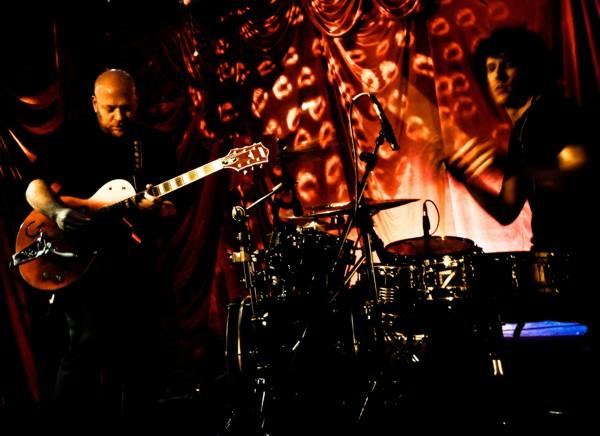
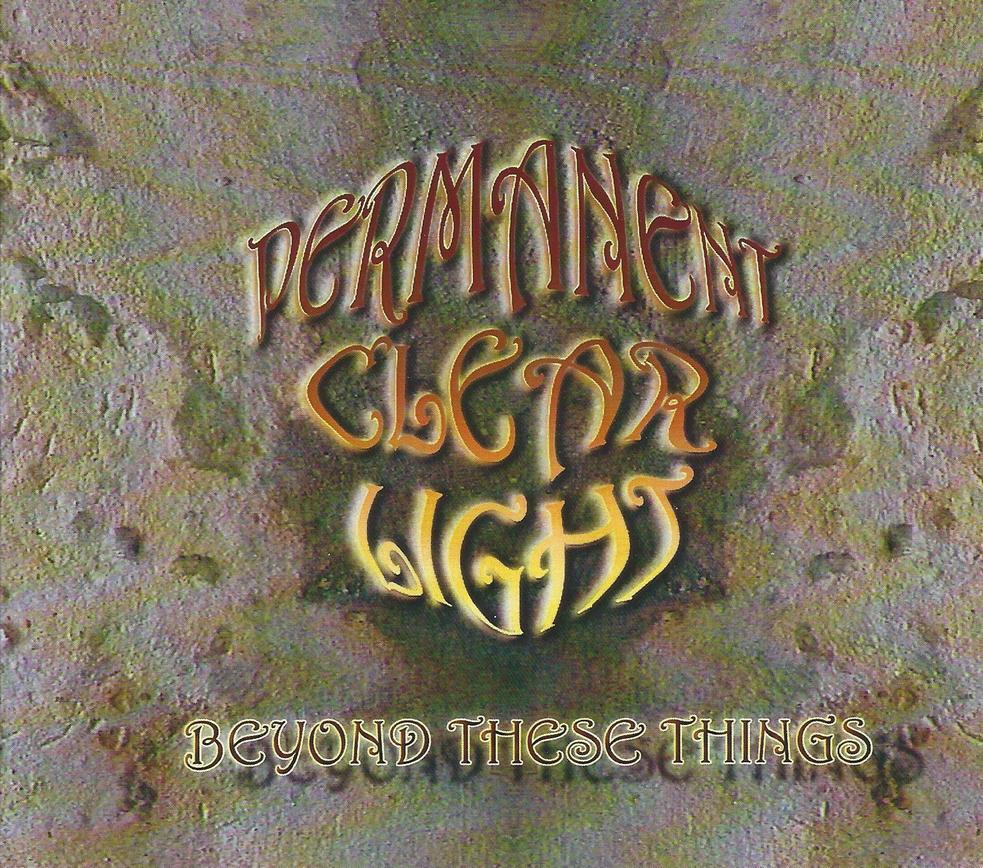 Permanent Clear Light are a Finnish trio who I’ve become acquainted with through their numerous contributions to Fruits de Mer Records compilations and their 7″ single on Fruits de Mer released last year. Beyond These Things is their full length debut, employing guitars, bass, Theremin, Mellotron, percussion, violin, cornet, synths, electronics and more, to create an outstanding marriage of Pop-Psych, Prog Rock, and… well… ALL things psychedelic.
Permanent Clear Light are a Finnish trio who I’ve become acquainted with through their numerous contributions to Fruits de Mer Records compilations and their 7″ single on Fruits de Mer released last year. Beyond These Things is their full length debut, employing guitars, bass, Theremin, Mellotron, percussion, violin, cornet, synths, electronics and more, to create an outstanding marriage of Pop-Psych, Prog Rock, and… well… ALL things psychedelic.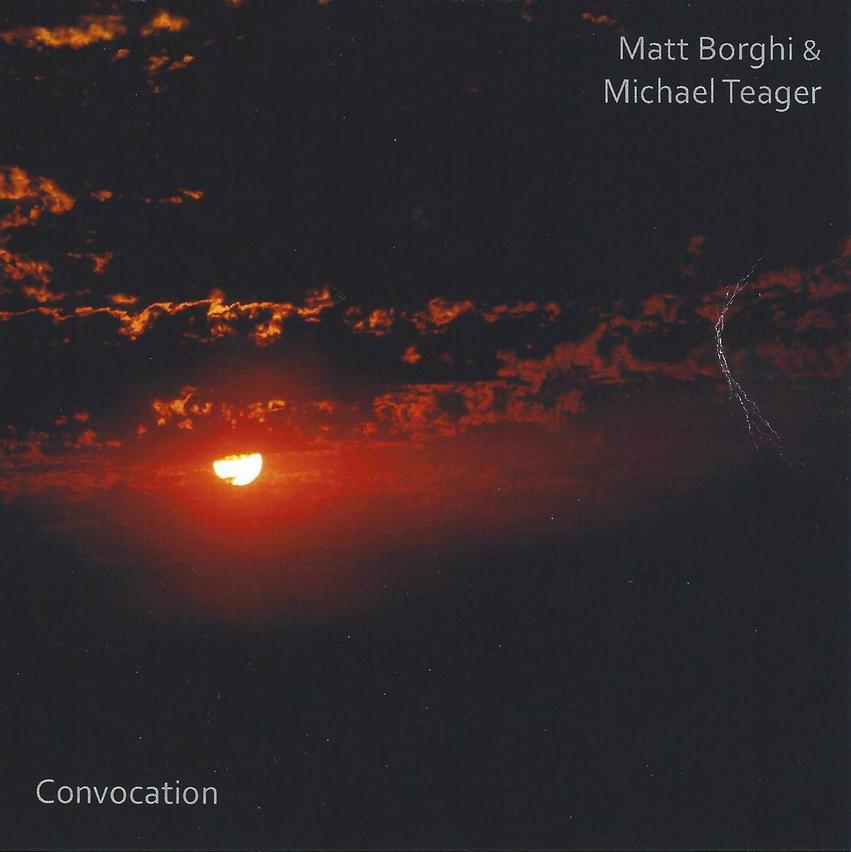 Recorded as a series of improvisational structures in the Spring of 2012, this is the first recording that Matt Borghi and Michael Teager have done after a half-decade of working together. With a background in classical and jazz saxophone, Teager brings a wide palette of influences to the music. Listeners will hear aspects of Jan Garbarek, John Coltrane and Dave Liebman that’s juxtaposed over Borghi’s pastoral guitar sounds that have more of their timbral origins in the work of Claude Debussy or Ralph Vaughan-Williams than they do other contemporary ambient guitarists… so the press sheet says and now onto the review.
Recorded as a series of improvisational structures in the Spring of 2012, this is the first recording that Matt Borghi and Michael Teager have done after a half-decade of working together. With a background in classical and jazz saxophone, Teager brings a wide palette of influences to the music. Listeners will hear aspects of Jan Garbarek, John Coltrane and Dave Liebman that’s juxtaposed over Borghi’s pastoral guitar sounds that have more of their timbral origins in the work of Claude Debussy or Ralph Vaughan-Williams than they do other contemporary ambient guitarists… so the press sheet says and now onto the review.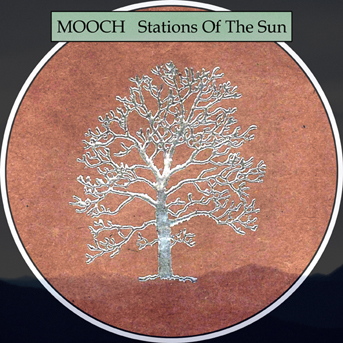 In 2008, Steve Palmer threw Mooch fans for a loop with the release of 1967 1/2, the first of three albums (followed by 1966 and 1968a) of songs inspired by 1960s psychedelia. In a recent five-favorite-Mooch-albums post I submitted to Steve’s blog, I commented that these three would go together well as a triple album set. The latest Mooch album – Stations Of The Sun – returns to the song format, though this time the inspiration is, as the promo sheet says, 70s Folk/Rock/Progressive territory in the style of bands such as Renaissance. The theme of the album is summer solstice 2013, with the 11 songs covering the pagan wheel of the year: eight festivals (two solstices, two equinoxes and four Celtic cross-festivals), plus two songs for the Oak King and Holly King who symbolically battle every solstice, and a final song covering the whole year.
In 2008, Steve Palmer threw Mooch fans for a loop with the release of 1967 1/2, the first of three albums (followed by 1966 and 1968a) of songs inspired by 1960s psychedelia. In a recent five-favorite-Mooch-albums post I submitted to Steve’s blog, I commented that these three would go together well as a triple album set. The latest Mooch album – Stations Of The Sun – returns to the song format, though this time the inspiration is, as the promo sheet says, 70s Folk/Rock/Progressive territory in the style of bands such as Renaissance. The theme of the album is summer solstice 2013, with the 11 songs covering the pagan wheel of the year: eight festivals (two solstices, two equinoxes and four Celtic cross-festivals), plus two songs for the Oak King and Holly King who symbolically battle every solstice, and a final song covering the whole year.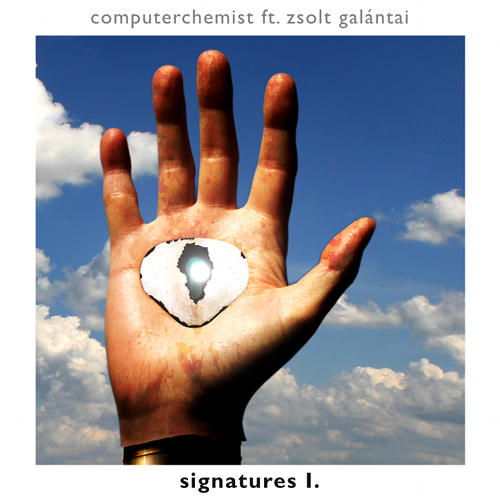 Computerchemist is headed up by multi-instrumentalist Dave Pearson, an English musician currently residing in Hungary. In 2011 Pearson met Budapest based drummer Zsolt Galántai through Facebook and the two decided to meet and see if any musical magic was possible. Pearson was so impressed with Galántai’s ability to play his music that he came up with the idea of creating Berlin School music with the addition of real drums and guitar, and, as Pearson describes, “strange time signatures to boot”. The time signatures used, very few in 4/4, are the inspiration for the title of these two albums. Pearson set various click tracks, encouraged Galántai to solo, and recorded it all. They ended up with a variety of “sequence-locked” drum sessions, and Pearson feels that Galántai in a way composed each of the tracks on Signatures because the music was built around his drumming. Signatures I and II are fully 70 minutes of music each and separated by what Pearson considers the lighter and darker tracks. So there you have a little insight into how the albums came together.
Computerchemist is headed up by multi-instrumentalist Dave Pearson, an English musician currently residing in Hungary. In 2011 Pearson met Budapest based drummer Zsolt Galántai through Facebook and the two decided to meet and see if any musical magic was possible. Pearson was so impressed with Galántai’s ability to play his music that he came up with the idea of creating Berlin School music with the addition of real drums and guitar, and, as Pearson describes, “strange time signatures to boot”. The time signatures used, very few in 4/4, are the inspiration for the title of these two albums. Pearson set various click tracks, encouraged Galántai to solo, and recorded it all. They ended up with a variety of “sequence-locked” drum sessions, and Pearson feels that Galántai in a way composed each of the tracks on Signatures because the music was built around his drumming. Signatures I and II are fully 70 minutes of music each and separated by what Pearson considers the lighter and darker tracks. So there you have a little insight into how the albums came together. So those are the “lighter” tracks. Signatures II opens with Strangeness In 13, which has a piano melody that gives it a Gothic flavor, backed by orchestral Melloton-ish keys, beautiful emotive guitar licks and steady drumming. Goodbye, Moszkva Tér is a cool grooving space rocker with fiery guitar soloing throughout. The drums, keys and sequenced patterns jam along steadily while the guitar trips along, and all having to dodge meteor shower space electronics. Floor Zero features a cool and strange combination of symphonic, spaced out Prog and electro-robotic rock, along with ripping cosmic jazz-fusion guitar fills. We’re deep into Prog territory on Commution, with heavy guitar driven rock that sounds like Steve Hackett’s early solo albums, plus a dash of Adrian Belew tossed into the licks. The music is continually shifting gears, transitioning to ominously quiet Gothic piano interludes, tickling-the-ivories jazzy swing segments, and Keith Emerson styled keys, always returning to the main high powered theme. LOTS happening on this track! High intensity Space-Prog is the order of the day on Forgotten Memory, with buzzing and whirring electronic waves, multiple layers of keyboards, and spaced out guitar licks. Smeem starts off as a cool combination of darkly intense bass/drum rhythms and ambient guitar exploration. Then the guitar does a 180 and veers into smoldering Bluesy rocking, soon adding distinctly Rick Wright flavored keys, and now we’re in a Pink Floyd realm with freaky electronics and rhythms like you’ve never heard on a Pink Floyd album. The Needs Of The Many is an eerie but rocking Space-Prog piece that sounds like it could be the soundtrack theme to a sci-fi flick. And, finally, Bongo In 4 is another track with a cosmic Pink Floyd flavor, featuring Space-Blues guitar jamming over a steadily rocking rhythm section and jazzy grooving keys. Later the music veers away from the Floyd style and a violin sound takes over from the guitar for a tug-at-the heartstring melodic passage, backed by robotic keyboard rhythms and rockin’ drumming.
So those are the “lighter” tracks. Signatures II opens with Strangeness In 13, which has a piano melody that gives it a Gothic flavor, backed by orchestral Melloton-ish keys, beautiful emotive guitar licks and steady drumming. Goodbye, Moszkva Tér is a cool grooving space rocker with fiery guitar soloing throughout. The drums, keys and sequenced patterns jam along steadily while the guitar trips along, and all having to dodge meteor shower space electronics. Floor Zero features a cool and strange combination of symphonic, spaced out Prog and electro-robotic rock, along with ripping cosmic jazz-fusion guitar fills. We’re deep into Prog territory on Commution, with heavy guitar driven rock that sounds like Steve Hackett’s early solo albums, plus a dash of Adrian Belew tossed into the licks. The music is continually shifting gears, transitioning to ominously quiet Gothic piano interludes, tickling-the-ivories jazzy swing segments, and Keith Emerson styled keys, always returning to the main high powered theme. LOTS happening on this track! High intensity Space-Prog is the order of the day on Forgotten Memory, with buzzing and whirring electronic waves, multiple layers of keyboards, and spaced out guitar licks. Smeem starts off as a cool combination of darkly intense bass/drum rhythms and ambient guitar exploration. Then the guitar does a 180 and veers into smoldering Bluesy rocking, soon adding distinctly Rick Wright flavored keys, and now we’re in a Pink Floyd realm with freaky electronics and rhythms like you’ve never heard on a Pink Floyd album. The Needs Of The Many is an eerie but rocking Space-Prog piece that sounds like it could be the soundtrack theme to a sci-fi flick. And, finally, Bongo In 4 is another track with a cosmic Pink Floyd flavor, featuring Space-Blues guitar jamming over a steadily rocking rhythm section and jazzy grooving keys. Later the music veers away from the Floyd style and a violin sound takes over from the guitar for a tug-at-the heartstring melodic passage, backed by robotic keyboard rhythms and rockin’ drumming. Glowpeople do indeed create music that glows. I have a minor neurological anomaly called synaesthesia. What happens is that stimulating one sensory or cognitive pathway will lead to an involuntary experience in a second sensory or cognitive pathway. In my case, I ‘see’ music in colours. No chemical enhancements required. And let me tell you, when I listen to the music on Glowpeople’s debut album, Things, I see some very beautiful colours. They are like the lights I would imagine illuminating some psychedelic jazz club in the heart of a European city, from long ago. Bright, dazzling colours infused with moody shadows and grey wisps of smoke. It’s both stimulating and calming at the same time.
Glowpeople do indeed create music that glows. I have a minor neurological anomaly called synaesthesia. What happens is that stimulating one sensory or cognitive pathway will lead to an involuntary experience in a second sensory or cognitive pathway. In my case, I ‘see’ music in colours. No chemical enhancements required. And let me tell you, when I listen to the music on Glowpeople’s debut album, Things, I see some very beautiful colours. They are like the lights I would imagine illuminating some psychedelic jazz club in the heart of a European city, from long ago. Bright, dazzling colours infused with moody shadows and grey wisps of smoke. It’s both stimulating and calming at the same time. California based Djam Karet are back with their first all new studio albums since 2005’s Recollection Harvest. AND next year will be the band’s 30th anniversary. These guys have produced a stellar body of work in the past three decades.
California based Djam Karet are back with their first all new studio albums since 2005’s Recollection Harvest. AND next year will be the band’s 30th anniversary. These guys have produced a stellar body of work in the past three decades.